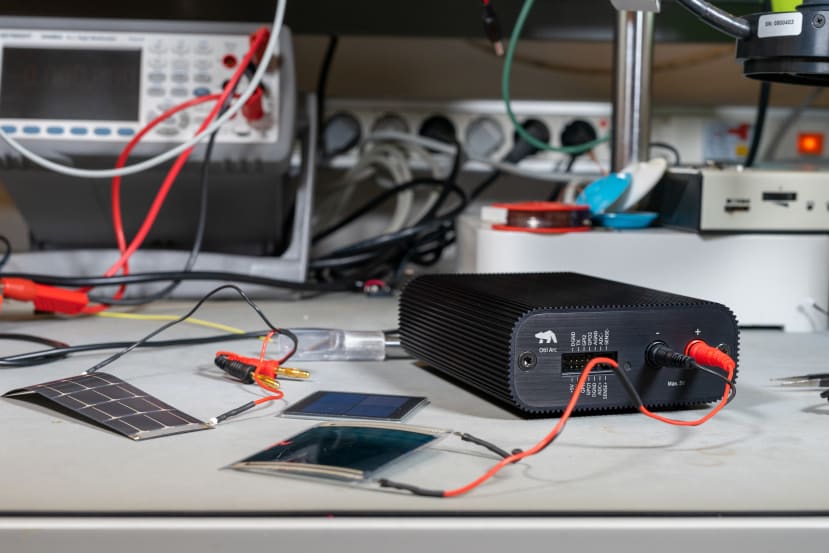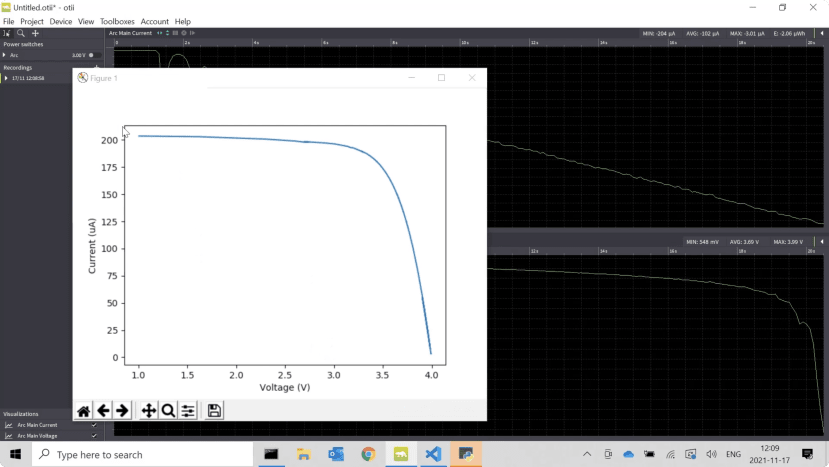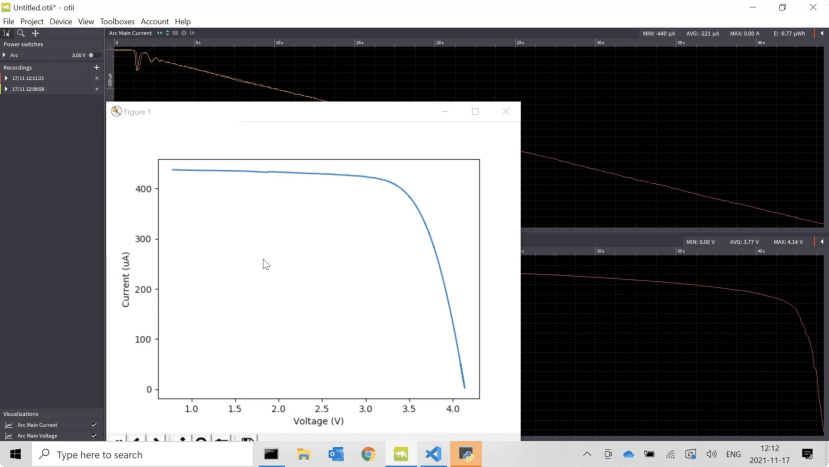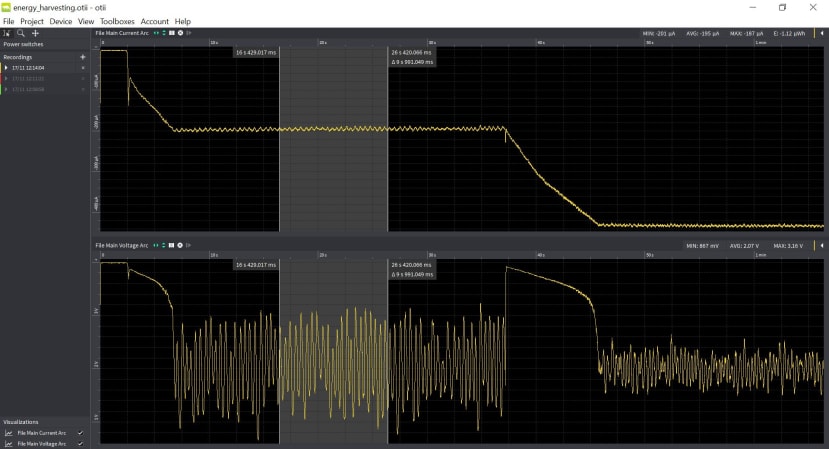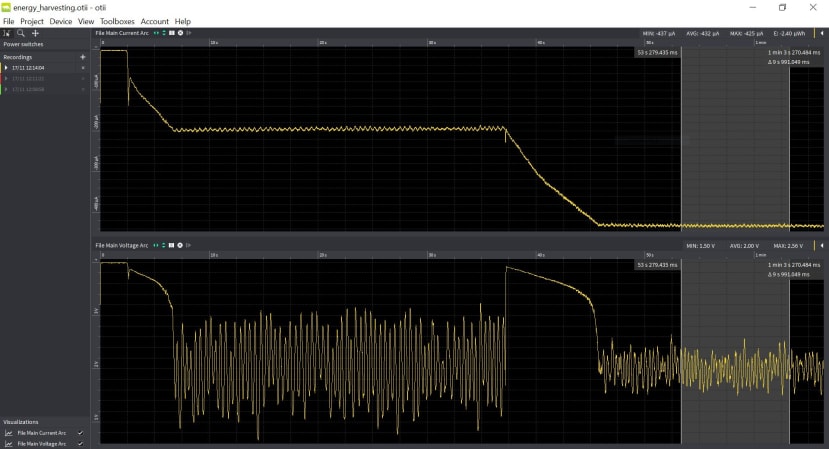Energy harvesting for IoT - How to measure the performance of an energy harvester
Follow articleHow do you feel about this article? Help us to provide better content for you.
Thank you! Your feedback has been received.
There was a problem submitting your feedback, please try again later.
What do you think of this article?
Taking advantage of ambient power sources like heat, motion or light can be very useful when you’re looking for an alternative to non-renewable sources aka batteries. But how much energy can you expect when working with an energy harvester? If you are considering using i.e., solar cells to power your IoT device measuring is key.
In this article, I’m going to give you a brief overview of how you can measure an energy harvester – meaning how much it can vary depending on the light conditions and how much energy you can get from the sun or light source.
How does my energy harvester behave in different light conditions?
To investigate these questions, I work with Otii Arc (192-3400) from Qoitech and Otii Automation Toolbox for Python scripting to control Otii Arc, also from Qoitech. And I will use Epishine’s printed organic indoor light energy harvester for this article.
To see how much energy I can get in certain light conditions I use a Python script that produces a current-voltage characteristic curve (I-V curve).
Fig 1: Qoitech’s Otii Arc connected to Epishine’s printed organic indoor light energy harvester
Scandinavia is known for its grey and dark winter days, so I test my solar cell in natural lower light conditions and with my daylight lamp turned on for comparison.
The I-V curve script runs through the command prompt and works as follows: The script starts energy harvesting and constantly increases the current sink trying to sink as much current as possible. While doing that it measures the resulting voltage and outputs the I-V curve when done.
So, when I look at the curve for our low-light condition, I can see that I have an open-circuit voltage of around 4V and the highest short circuit current is 200uA.
Fig 2: I-V curve for the solar cell in the low-light condition
If you are interested in the individual steps of the script and how it works in detail, check out the tutorial on the Qoitech website here.
Let’s see how the curve looks like with my daylight lamp turned on.
Fig 3: I-V curve with the daylight lamp turned on
As you can see, I can get a lot more energy now. I still have an open circuit of just above 4V but now I could sink more than 400mA. That is a big difference.
How much energy can you get from the sun or light source?
Now I also would like to show you a different way of investigating this – using a Lua script for maximum peak power tracking (MPPT) which I run in the Otii application. Again, note that this only works with a Otii Automation Toolbox subscription.
So, what the MPPT script does is that it measures the power, then increases the current and when the power drops it lowers the current sink again – in short. Like before, if you want to see how it works in detail, check out the tutorial online where I explain the script.
By getting into the rhythm of increasing and decreasing the current sink it tries to harvest as much energy as possible giving you a graph that shows you how much energy you can get out of the light condition the solar cell is in. The pictures below show the maximum energy for both the Scandinavian low-light condition and the daylight lamp condition.
Fig 4: The low-light condition results in 1.12uWh for 10s, or 0.40mW
Fig 5: The daylight lamp condition results in 2.40uWh for 10s, or 0.86mW
Once you know the maximum energy you can then decide on how much you can transmit and what the optimal cycle time for your specific device would be.
Conclusion
To decide on whether a light energy harvester (or any energy harvester really) might be an option for the device you are developing measuring is key and the only option for you to get a realistic picture of the energy levels. You want to test your device in different light conditions, and you then also want to test different energy harvesters to have your device energy-optimized.
If you want to know more about energy optimization, about Otii Arc or energy harvesting check out the Qoitech blog or the Qoitech YouTube channel.


